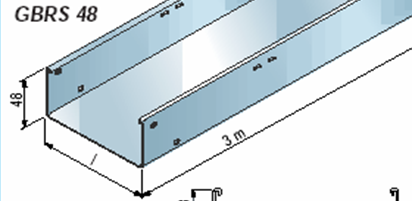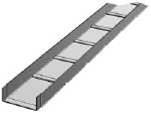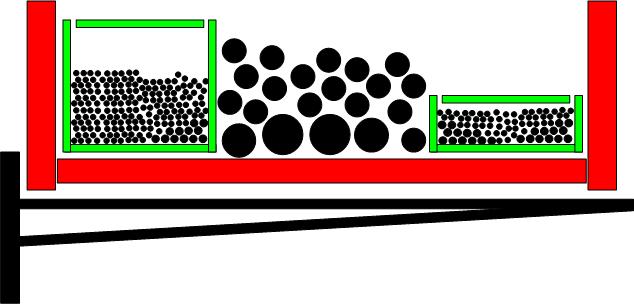
Cable Trays
 |
Cable Trays |
|
| Home | Electronics | Notes | Meetings | Subsystems | Search |
Most of the cable trays installed in the UX85 cavern for the sub-detector long distance cables are metallic covered cable ducts for EMC reasons. Some exceptions are made in counting house and on certain sub-detectors where "cablofil" types are installed for flexibility reasons. A more standard cable tray model is used in the cavern for long straight sections for mains electrical and general services cables.
The following cable tray allocation has been done in UX85 cavern when and where possible :
Have a minimum of 1 cable tray per sub-detector (in order to avoid any confusion between sub-detectors).
2 to 3 empty spare cable trays are installed on both sides of the cavern (via both chicane passage) for future extension.
For cable ducts receiving different cable types, metallic separation is being installed in the duct. This simply consist of a metallic plate screwed in the duct.
If required and specified by the sub-detector, an additional shielding separation made by a metallic cable duct (or cable conduit) can be installed within the cable trays. This can be very efficient for EMC problems to immune sensitive cables and/or to reduce the emitted electromagnetic noise from power cables.
Another option is to install plastic (0-halogen) cable duct or conduit to insure a mechanical separation to avoid small and fragil cables (optical fiber for example) being compressed and eventually broken when several kind of cables are in the same cable duct.
Different cable tray types:
|
"Cablofil" type: |
Metallic cable duct: | Plastic cable duct: |
Standard cable tray: |
|
|
 |
 |
|
Cable tray drawings:
These drawings can be viewed using HPGL viewer : http://service-hpglview.web.cern.ch/service-hpglview/
In front of the counting house : https://edms.cern.ch/file/625612/AC/lhbieec_0027-vAC.plt and https://edms.cern.ch/file/718261/0/lhbieec_0034-v0.plt
On the RB86 (Calo and Muon) side : https://edms.cern.ch/file/675784/AA/lhbieec_0029-vAA.plt
From RB86 side wall (Calo PP) to Calo FP : https://edms.cern.ch/file/736332/AA/lhbieec_0036-vAA.plt
On the RB84 (Velo, Rich1) side : https://edms.cern.ch/file/672681/AB/lhbieec_0028-vAB.plt
RB84 side from detectors to balcony racks : https://edms.cern.ch/file/733440/0/lhbieec_0035-v0.plt
In the cavern floor groove (for OT, IT, Rich2) : https://edms.cern.ch/file/677837/AC/lhbieec_0032-vAC.plt
From bunker racks to detectors (for OT, IT, Rich2) : https://edms.cern.ch/file/741464/AB/lhbieec_0037-vAB.plt
On the gantry structure (link between lot 4 and lot 2) : https://edms.cern.ch/file/677170/AA/lhbieec_0031-vAA.plt
Links:
Sub-detector Cable trays in UX85 are listed in this EDMS document : https://edms.cern.ch/document/744108/
Chicane problems (bending radius of the cables, a chicane model, scale 1/1, has been built for tests)
Some cable integration tests have already been made in the mock up: Cable test in mock up
Preliminary overview on the cable trays passage in the experimental cavern
You can have a look on the cablofil web site: http://www.cablofil.com
Very interesting web site on cable trays (cable tray institute): http://www.cabletrays.com
"National Electrical Manufacturers Association" standards and recommendations: NEMA VE1 and VE2 on cable trays

If you have any comments and/or questions about the site's organization or its content don't hesitate to contact me by e-mail.
| This page was last modified by
VB on
September 05, 2006.This
page has been accessed
|